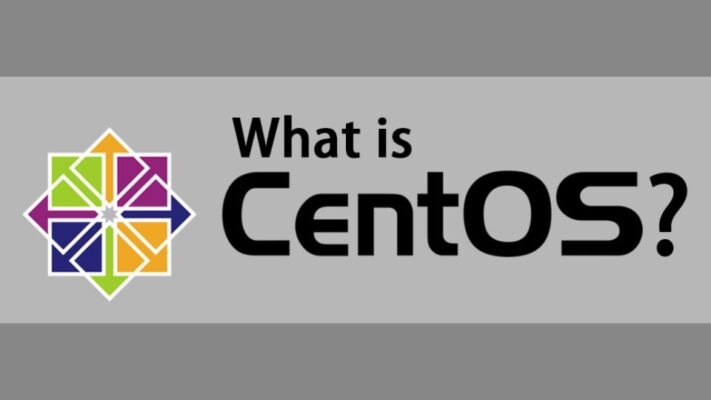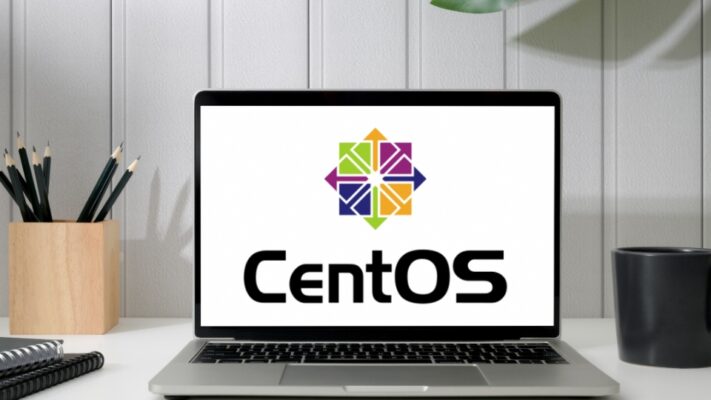What is CentOS? It offers businesses and developers a stable, secure, and high-performance operating system without the licensing costs of commercial solutions. In this article, we will explore the essential features of CentOS, its key uses in web hosting, databases, and cloud computing, and the recent shift to CentOS Stream. We will also discuss how CentOS compares to RHEL, its advantages, and why it remains a popular choice for server environments and enterprises.
What is CentOS?
CentOS (Community ENTerprise Operating System) is a free, open-source Linux distribution based on Red Hat Enterprise Linux (RHEL). It is designed to provide a stable, reliable, and secure operating system for enterprise environments, with no associated licensing costs. CentOS was created to offer the same functionality as RHEL, but without the commercial support, making it a go-to choice for businesses and developers who want an enterprise-quality operating system without the cost.

The Origins of CentOS
CentOS was first released in 2004 as a community-driven project aimed at providing a free, open-source alternative to Red Hat Enterprise Linux (RHEL). Red Hat is a leading provider of commercial Linux-based software solutions, but its enterprise offerings come with a subscription cost for support, services, and updates. CentOS was created to provide an open-source solution by taking the source code from RHEL, removing any trademarks and branding, and making it available to the public for free.
The CentOS project benefited greatly from Red Hat’s codebase, allowing CentOS to deliver a stable and secure operating system without the high cost associated with RHEL. Over the years, CentOS grew in popularity and became one of the top Linux distributions for web servers, database management, and cloud-based applications.

Key features of CentOS
1. Free and Open Source
One of the most notable features of CentOS is that it is entirely free to download, use, and modify. CentOS uses the same source code as RHEL, which means it benefits from the same stability, security, and performance. However, while RHEL offers commercial support and services, CentOS is community-driven and supported by users around the world.
2. Stability and Reliability
CentOS is known for its stability, making it an ideal choice for production environments. It is built from the same codebase as RHEL, which is known for its enterprise-level reliability. CentOS updates and patches are carefully tested and released to ensure minimal disruption to servers and applications. This makes CentOS a great choice for businesses that require a stable environment without unexpected downtime.
3. Enterprise-Grade Performance
CentOS is built for enterprises. It is optimized to run on servers, workstations, and virtual environments, offering robust performance for mission-critical applications. The stability and reliability of CentOS make it a go-to choice for hosting websites, databases, cloud infrastructure, and enterprise applications.
4. Security and Updates
CentOS follows a strict security policy, including regular updates and patches to fix vulnerabilities. Since CentOS is based on RHEL, it inherits Red Hat’s reputation for providing secure and long-term support for its products. Security patches and updates for CentOS are provided through its official repositories and are maintained for many years, providing a long-term solution for server environments.
5. Wide Range of Software Support
CentOS supports a wide range of software, including web servers (Apache, Nginx), databases (MySQL, PostgreSQL), and application servers (Tomcat, JBoss). The extensive software repositories available for CentOS make it easy for users to install and configure applications that meet the needs of their businesses.
6. Compatibility with Red Hat Ecosystem
Since CentOS is based on RHEL, it is fully compatible with the Red Hat ecosystem, including tools like Red Hat Satellite, Red Hat Ansible, and Red Hat OpenShift. This compatibility makes it easier for users to migrate from RHEL to CentOS and integrate with other Red Hat-based tools and services.
7. Active Community and Documentation
CentOS has a strong community of users and contributors who provide free support through forums, mailing lists, and online documentation. This community-driven model ensures that users can access a wealth of information and resources when troubleshooting or configuring their CentOS system. Additionally, CentOS documentation is detailed, covering everything from installation to advanced system administration.
Use cases for CentOS
CentOS is commonly used in various server environments due to its stability and cost-effectiveness. Some of the most popular use cases include:
1. Web Hosting
CentOS is one of the most widely used operating systems for web hosting servers. It works seamlessly with popular web server software like Apache and Nginx, making it ideal for hosting websites and web applications. CentOS also supports various content management systems (CMS) like WordPress, Joomla, and Drupal, enabling businesses to set up and manage websites efficiently.
2. Database Servers
CentOS is frequently used as the base operating system for database servers. It supports open-source databases such as MySQL, PostgreSQL, and MariaDB and is often deployed for high-performance database environments. Its stability and performance make it an excellent choice for managing large volumes of data in production environments.
3. Cloud Infrastructure
Many cloud service providers use CentOS to power their virtual machines (VMs) and infrastructure-as-a-service (IaaS) offerings. CentOS is compatible with cloud platforms like OpenStack, Docker, and Kubernetes, making it an ideal choice for building and managing cloud-based services. Its reliability and long-term support make it a great option for cloud hosting.
4. Development and Testing
CentOS is also popular among developers and testers. It is used for creating development environments, staging servers, and testing environments for web applications and enterprise software. CentOS provides developers with an environment similar to RHEL, ensuring that their applications can be easily migrated from a development or testing environment to a production server.
5. Enterprise Servers
CentOS is used by large enterprises as an alternative to more expensive commercial Linux distributions. It is deployed for running critical business applications, enterprise resource planning (ERP) systems, file sharing, and more. Its long-term support and enterprise-grade features make it a reliable solution for businesses looking to reduce costs without sacrificing performance.
CentOS vs. RHEL: Key Differences
Since CentOS is based on RHEL, it shares many features and benefits. However, there are some key differences to note:
- Support: RHEL is a commercial product with paid support from Red Hat, including access to premium services and technical support. CentOS, on the other hand, is community-supported with no official paid support.
- Licensing: RHEL is a subscription-based model that requires users to pay for support, while CentOS is free to use.
- Software Repositories: While CentOS uses the same software and updates as RHEL, CentOS releases updates after they are first made available to RHEL customers. This means RHEL customers get early access to patches and new features.
- Updates: RHEL offers a more predictable update cycle with long-term support, while CentOS provides the same updates, but users may not receive them as quickly as RHEL customers.
CentOS vs. Ubuntu
CentOS and Ubuntu are two of the most popular Linux distributions, each offering unique features tailored to different use cases. While both are open-source and widely used in server environments, they differ in their philosophy, support models, and target audiences. Understanding these differences will help you choose the right distribution for your needs.
1. Target Audience and Use Cases
CentOS is primarily aimed at enterprise users and businesses that require a stable, secure, and long-term supported platform. Based on Red Hat Enterprise Linux (RHEL), CentOS is often chosen for server environments where stability and reliability are critical. It is particularly popular for web hosting, database management, and cloud services. Many organizations prefer CentOS for large-scale production systems where a predictable environment is necessary.
Ubuntu, on the other hand, is more versatile and is used by individuals, developers, and enterprises alike. It’s popular for both desktops and servers. Ubuntu is known for its ease of use, and it’s the go-to choice for beginners transitioning to Linux. It’s also commonly used for cloud computing and development, with strong support for cutting-edge technologies. Ubuntu is the primary distribution for many developers, as it supports a wide range of development tools and software.
2. Release Cycle and Updates
CentOS follows a more conservative release cycle, which is closely tied to the release of RHEL. CentOS typically waits for RHEL to release updates and then adopts them, providing a stable, long-term solution for enterprise users. This can make CentOS a great choice for those who need reliability and don’t want to deal with rapid changes.
In contrast, Ubuntu follows a faster and more frequent release cycle. It releases new versions every six months, and every two years, it releases a Long-Term Support (LTS) version, which gets updates for five years. While this faster cycle allows Ubuntu users to access new features more quickly, it may not be as stable as CentOS for long-term production environments.
3. Software and Package Management
Both CentOS and Ubuntu use different package management systems, which affects how software is installed and updated.
- CentOS uses the YUM (Yellowdog Updater, Modified) package manager, which works with RPM (Red Hat Package Manager) packages. This package management system is preferred in enterprise environments for its reliability, but it can be more complex for users who are accustomed to the apt-based systems of other distributions.
- Ubuntu, on the other hand, uses the APT (Advanced Package Tool) system with DEB (Debian) packages. This system is generally more user-friendly, especially for new Linux users, and offers access to a vast repository of software. Ubuntu also supports Snap packages for more modern and versatile application management.
Why choose CentOS?
CentOS is an ideal choice for businesses looking for a reliable, cost-effective Linux distribution for servers. It offers the same enterprise-grade features as RHEL but without the need for expensive subscriptions. Whether you’re hosting a website, managing a database, or running cloud services, CentOS can meet your needs with a high level of performance and security.
Additionally, CentOS’s compatibility with RHEL makes it a perfect stepping stone for companies planning to migrate to Red Hat’s paid services in the future, offering a similar environment without the initial cost.
CentOS remains one of the most popular open-source Linux distributions, providing a robust, secure, and stable platform for businesses and developers. Although the transition to CentOS Stream has altered its traditional role, CentOS is still a trusted choice for many server environments.
Whether you’re running a web server, managing databases, or working with cloud infrastructure, CentOS offers the reliability and performance required for enterprise-level applications without the cost of commercial support.
